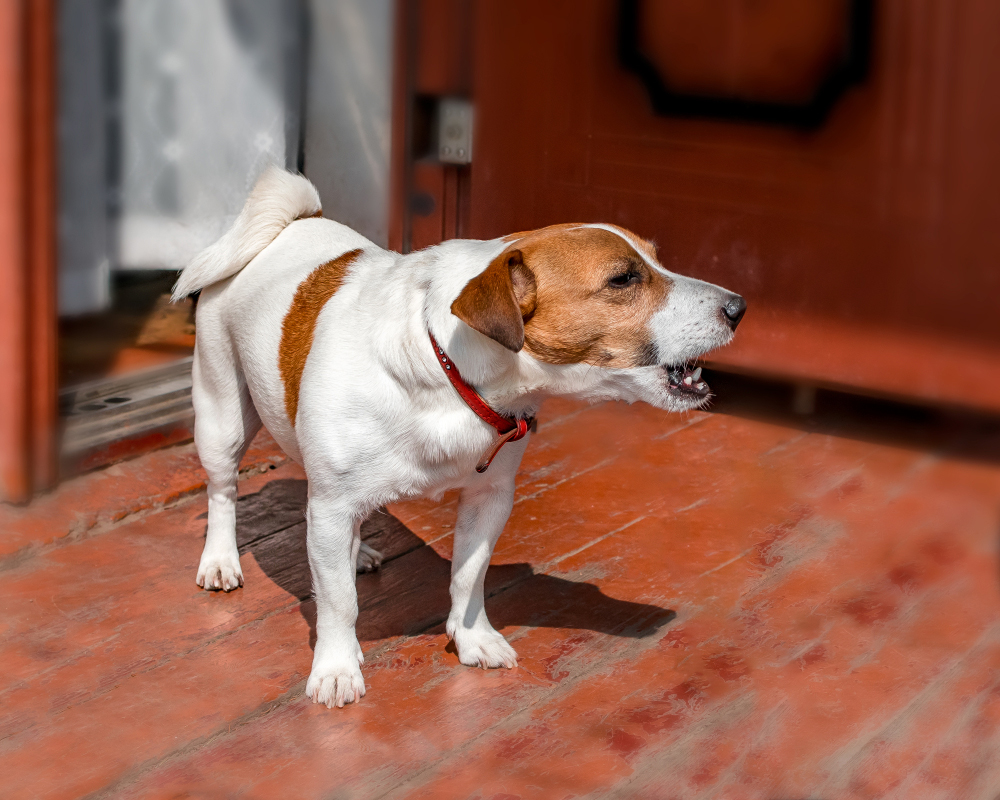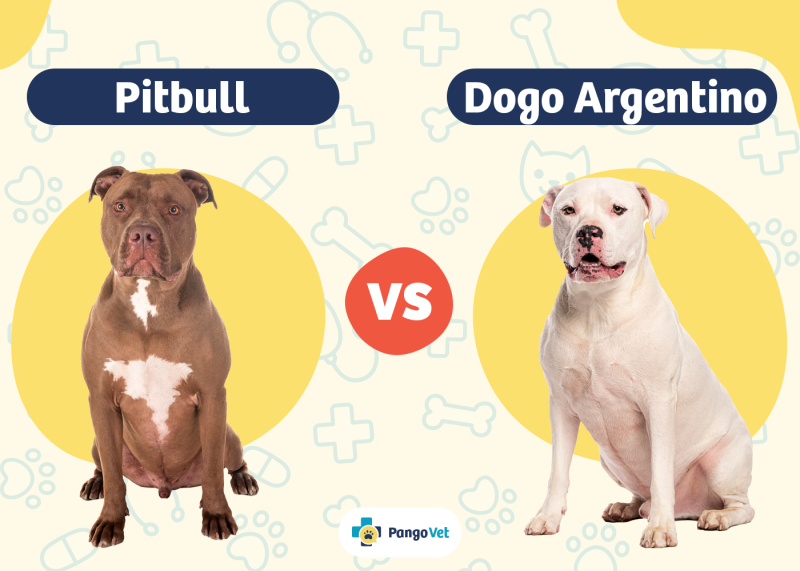In this article
View 3 More +We have a unique relationship with our canine companions because of our ability to communicate with our pets. Dogs can interpret and respond to our emotions. Some dogs, like Siberian Huskies, seemingly sing and “talk” with their vocalizations. You can even see something similar in their wild counterparts, like the howling and yelping of wolves and coyotes. This may make you wonder how canids can make so many sounds.
Dogs, like people, have vocal cords or “folds”. Auditory communication begins in the larynx or voice box. Interestingly, the canine and human structures are similar, making them helpful research models. Canids communicate in various ways, and sound is just one form. However, it speaks to the impact of domestication and how it has influenced canine behavior.

Dog Anatomy and Barking
Let’s begin with the anatomy that makes canine communication possible. The glottis describes the opening between the vocal folds. It’s wide when the animal is breathing, but vocalization alters the width of this passage to produce various sounds. Several automatic responses occur in succession, starting with the narrowing of the glottis through the action of the vocal cords.
Canids exhale as they vocalize, the air pushed out from the lungs reaches the glottis and vocal folds causing them to vibrate and thus producing sound waves. The dog’s skull and its structures further influence what you’ll hear. Your pup’s tongue, lips, and mouth also get in on the act, all affecting the intensity, volume, and pitch of the resulting sounds. Your pet isn’t different from you in that the animal must close off the passage to the esophagus and stomach while they vocalize.

Influencing Factors
Other factors that affect the size and length of vocal cords influence the vocalizations, starting with the animal’s age and size. A puppy sounds very different from an adult. Likewise, there’s no mistaking the bark of a Saint Bernard versus the yips of a Chihuahua.
Genetics and selective breeding play evident roles in the type and use of barking. Think of a guardian dog like the Great Pyrenees. They aren’t noisy pets, so when they bark, it is to alert their owners of something. Contrast this behavior with an American Foxhound that traditionally hunted in groups. These pups are quite vocal, and domestication encouraged dogs to act in these ways.
We can also consider the individual animal. Daily activity and early positive socialization may make a pup less likely to bark at a passerby because they’re less fearful. Training may also influence canine behavior if a pet is taught to stay quiet. We must look at the context. Remember that dogs can read human emotions and respond accordingly, whether it’s playtime or a threat.
The vocal cords will get quite a workout if the animal is excited or angry. After all, our pets are capable of several emotions. The dog’s other actions involving the mouth, lips, and tongue can intensify the sounds they’re making. Of course, the dog’s respiration and heart rate are undoubtedly racing in these extreme situations, adding more fuel to the fire.

Dog Vocalization and Communication
Dogs have many ways of communicating with their owners that go beyond using their vocal cords. Body language is even more descriptive than what the animal is saying acoustically. Think of the raised neck hair on a growling dog. Or consider a pup rolling on their back, exposing their belly as they whine. Communication is complex with our canine companions in ways we are still learning about. Let’s compare our respective vocal cords.
We mentioned the similarities between the structures in humans and canines. How does that affect their output? We consulted the Guinness World Records for the scoop on which can make the loudest sound. The record for a person is 129 decibels (dB). A Golden Retriever named Charlie captured the prize on the canine front with a bark of 113.1 dB. To put it in perspective, a motorcycle is about 100 dB.
It makes evolutionary sense that dogs have loud barks. Long-distant vocalization is one vital form of communication they use to find one another and avoid conflicts with interlopers in their territories. We discussed how our canine companions communicate with us and the influence of domestication. What other impacts has selective breeding had on our pets?
One study examined the effects on domestic dogs’ responses to wolf howls. Remember that the two species share a common ancestor and have similar behaviors. The researchers found that dogs with lineage from ancient breeds were more likely to react to howls, suggesting a notable effect on canine communication because of domestication.

Nuisance Barking
Vocalization comes to the forefront when considering its effects on the human-canine relationship. That spotlights the action of the vocal cords when it comes to nuisance barking. It’s an active area of research because of its influence on pet relinquishment. One study examined risk factors of nuisance barking. The scientists identified several factors, including younger dogs, more than one dog in the household, and those of herding breeds.
Unsurprisingly, nuisance barking has other unintended consequences. One team of researchers studied reactions to the sounds of dogs barking and crying babies and found subsequent negative effects on cognitive abilities. This aside, nuisance barking is the cause of significant distress for neighbors and can lead to noise complaints. There are legal limits as to how long a dog can be left to bark before someone is entitled to make an official complaint, often around the 10-minute mark depending on each state.
There is a lot that can be done to mitigate excessive barking but it can take time, effort and consistent positive reinforcement. Environmental management can profoundly affect outcomes and the animal’s quality of life. Often, dogs left alone outdoors may bark out of frustration, others may bark at every person they see walking by. Identifying the triggers for the barking and correcting these issues can provide an excellent solution. Behavioral modification using positive reinforcement can quiet a loud pet and nurture the bond between the dog and caregiver.
Canine Devocalization
There is a lot of controversy surrounding canine devocalization or ventriculocordectomy. Also known as debarking this involves the surgical removal or permanent damage of the vocal cords. Proponents cite an effective fix to an annoying problem that can have legal implications. They also point to the dog’s benefits of staying in their home. Opponents point out that the procedure only treats the signs and not the cause of the unwanted behavior. Surgery also carries health risks and should be an absolute last resort and not a decision of convenience.
Debarking of dogs is illegal in many countries. Opposition to the removal of an important part of anatomy and rising awareness are turning the tide on the acceptability of the procedure in the US.
We agree with the latter position. Dogs bark; it’s how they communicate. So, it’s up to the owners to provide adequate mental and physical stimulation, care, train and socialize their pets. Many resources exist to help with troubled animals, starting with your vet. They can refer you to veterinary behaviorists who can help find a solution that doesn’t involve relinquishment or surgery.

Final Thoughts
Dogs, like humans, have vocal cords. They serve the same purpose for them as they do for us. They allow us to communicate. Vocalizing has been an integral part of our relationship since domestication. For good or bad, our pets make lots of sounds, whether warning us of danger or barking out of boredom. People must understand their commitment to pet ownership and seek help before nuisance barking becomes a problem.
Featured Image Credit: SunyawitPhoto, Shutterstock



















